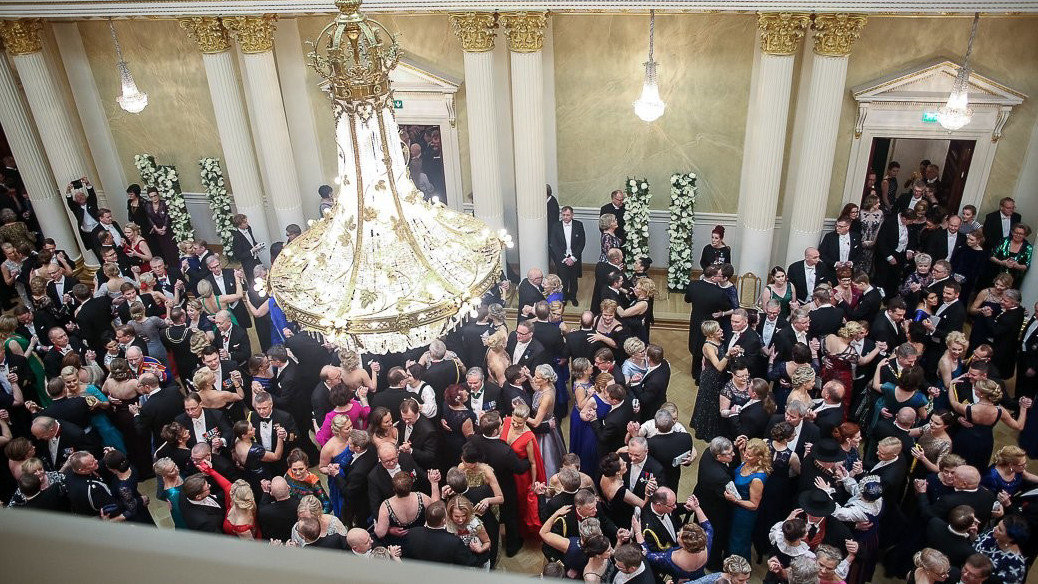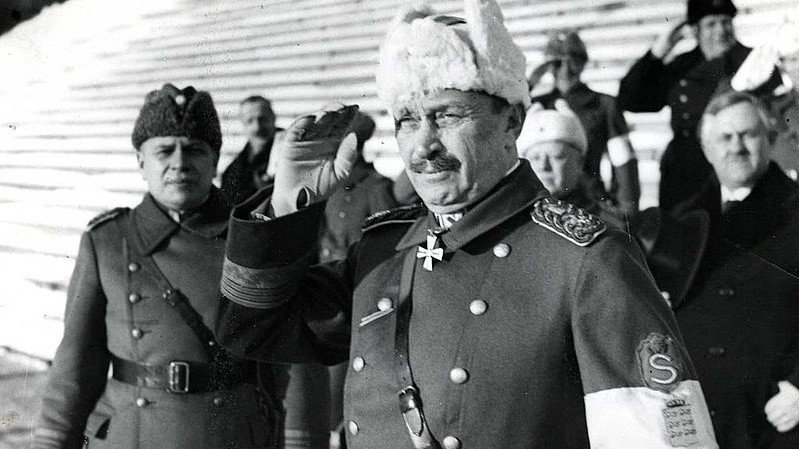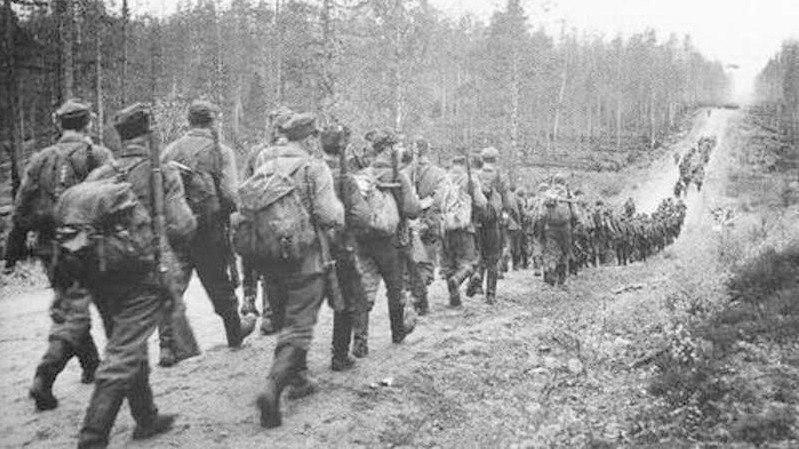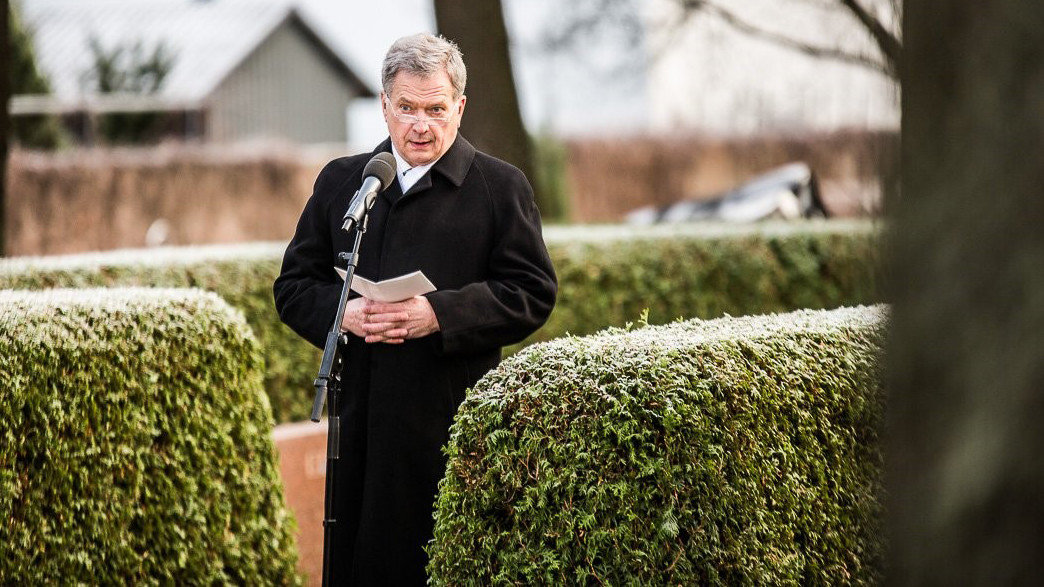Every December 6, the Finns commemorate the day of their Independence from Russia in 1917. As in few countries of the world, this celebration of the Independence is a reason of pride shared by almost all the population because of its particular symbolism.
A simple look at what happens on the streets, no matter if in a big city or at the smallest town, makes it clear that for most Finns this national holiday is also a day to walk with the heads held high: blue and white flags waive proudly from the dawn, the students parade with their white caps, families light candles at their homes and enjoy festive meals, the stores sell pastries and other delicacies with the colours of the country and people are in good mood.
At the more institutional level, public radio and television broadcast patriotic music and films. The government and the politicians make also patriotic statements. The President imposes medals on people who have achieved successes that make the country proud and in the evening there is a reception at the Presidential Palace attended by some 2,000 guests, including the most prominent people in Finnish society. This year the whole festivity will be dedicated to the environmental issues.
During the party it also happens that some groups organise protests in the street, usually to demand social justice and against inequality.

A moment of the last Presidential Reception in 2017. Source: @TPKanslia
The high price of liberty
During the whole day there are also military parades, tributes to the war veterans, demonstrations of gratitude at war memorials and visits to the cemeteries. This is because Finland’s Independence Day (Itsenäysyyspäivä, as said in its language extremely complicated for foreigners) is not just a festivity to celebrate political self-determination, but also freedom.
This young little European nation has lived more years under foreign rule than with full power to decide its destiny. For almost 700 years, from around 1150 it was a part of Sweden and it was seized and passed to Russia as a result of the defeat of Napoleon in 1809. For 108 years it became an autonomous Grand Duchy within the Czarist Empire until 1917.
Still, after the emancipation from Russia the Finns had to go through years of war and hardships, and at the time of World War II they had to take the guns to defend again their liberty. It was not until they were completely masters of their destiny that these women and men from the North began to amaze the world with their country model and social conquests. No wonder that nowadays young generations are taught since very little that the freedoms conquered by their ancestors must not be taken for granted.
How the Independence was achieved
The political tensions that led to the independence of Finland erupted right after the Russian Revolution. And Finland, which during the previous era of clandestine political activity had been a favourite place of refuge for the leaders of the new Bolshevik Russia, did not remain aloof from those tensions.
As explained by the professor Robert Service, a historian and expert in Russian and Soviet studies at St Anthony’s College in Oxford, at that time the tensions not only affected the classic division between Reds and Whites that had split the Russian society in half after the October Revolution. There were also territorial tensions that affected the nations that made up the former Russian Empire. And the Bolsheviks led by Lenin had promised before taking power that after the Revolution each one would have the right to the "national self-determination."
This does not mean that the new Russian leaders were accepting the separation of part of the former Empire’s territory. "By offering the right to secession, (the Red Government) was trying to convince non-Russians that the revolutionary state would treat all national and ethnic groups equally, and there was strong hope that the consequence would be that other nations would believe that they could trust the Russians", as Service says.
At the same time, the Bolsheviks had a practical interest in being kind with Non-Russians: immersed in the struggle against the foreign invasion and the civil war that followed the revolution, they needed to calm the political and military elites of the other nationalities of the Empire. The aim was to prevent them from joining the cause of the Whites and opening new battlefronts against the revolutionary power.

Marshall Carl Gustav Emil Mannerheim, military leader of the Whites in the Finnish Civil War and later President of Finland
Good relations
Until then, the relations between the Russian and Finnish Marxists had always been good. The Finns had provided safe haven to the Bolshevik leadership, and Lenin’s Party had supported the mobilization of the Finnish popular opinion in favour of the total autonomy of the Russian Government.
“Absolute independence, however, was not claimed much until that moment” “And yet, Lenin and Stalin, to the surprise of the whole world, encouraged the Finns to adopt that position”.
As a result, a delegation of Finnish ministers was invited to the Russian capital and a formal declaration of secession was negotiated. In Finland, after several disagreements on December 4 the Senate led by Pehr Evind Svinhufvud made a Declaration of Independence which was adopted by the Finnish Parliament two days later. What once had been an imperial power, now insisted that one of its regions should be left out of its domain.
“But the motives of Lenin and Stalin were less lenient than they might have seemed", points out Robert Service. Both Russian leaders had the feeling that the Finnish Marxists would thus achieve an excellent opportunity to dominate an independent Finland. And that would allow the Bolsheviks and their Finnish comrades to resume their former ties. And eventually, to integrate again Finland into the new multinational state ruled from Petrograd.
A nation in arms
The Bolsheviks were wrong. Once the Finns knew the taste of freedom never wanted to rejoin Russia. After a brief but bloody civil war, a new Finnish Government was established and it became clear that Finns had their own agenda that placed equality in the foreground. They had been pioneers in allowing universal suffrage, and therefore the female vote, they were a literate people with a high social conscience and eager to create an egalitarian society. And they were also sure that they could achieve it without embracing the Soviet model.

It would not be an easy road. The Finns would still have to take up arms again in 1939 during the Winter War to defend their young homeland from Soviet aggression. And again in 1941 during the Continuation War to try to shake off the Russian yoke, which had taken away part of the Karelian region. The Finnish troops led by Marshall Mannerheim managed to resist the strikes of the superpower and preserved the country’s independence.
At the end of the Second World War, Finland emerged as a democratic, neutral and dynamic republic, which over time was able to provide its citizens with one of the highest living standards in the world. During the Cold War, its neutrality achieved many successes in the field of foreign policy, especially as a mediating country between the two great powers who dominated the World stage until the end of the 20th century.
Finland is now a member of the European Union and has turned democracy and pacifism into its hallmarks. As a free nation, it has surprised the world with its high level of development, its achievements in the fields of technology, economics, science and sports. Undoubtedly, a good balance today that the country turns 101 years old.

The current President of Finland, Sauli Niinistö. Source: @TPKanslia












